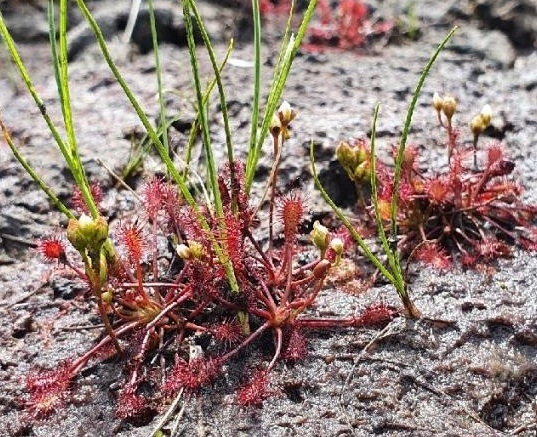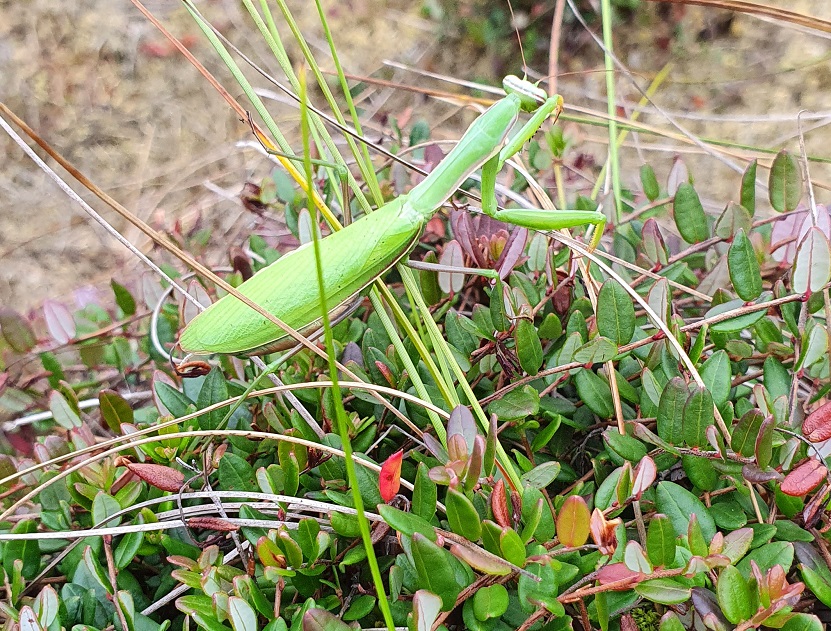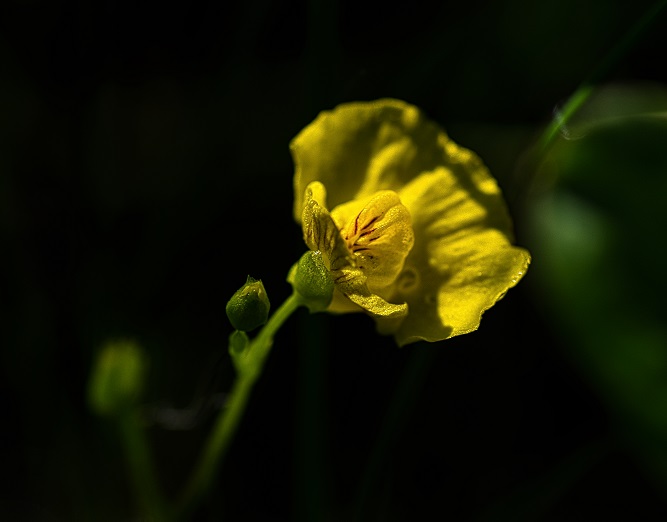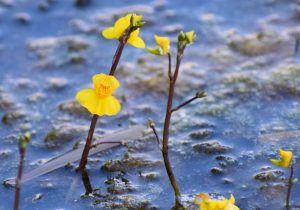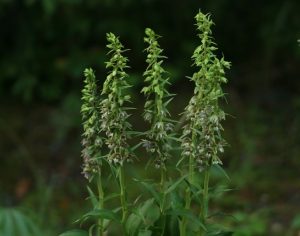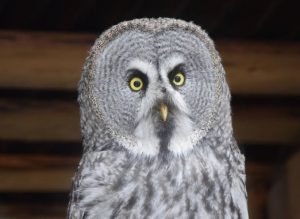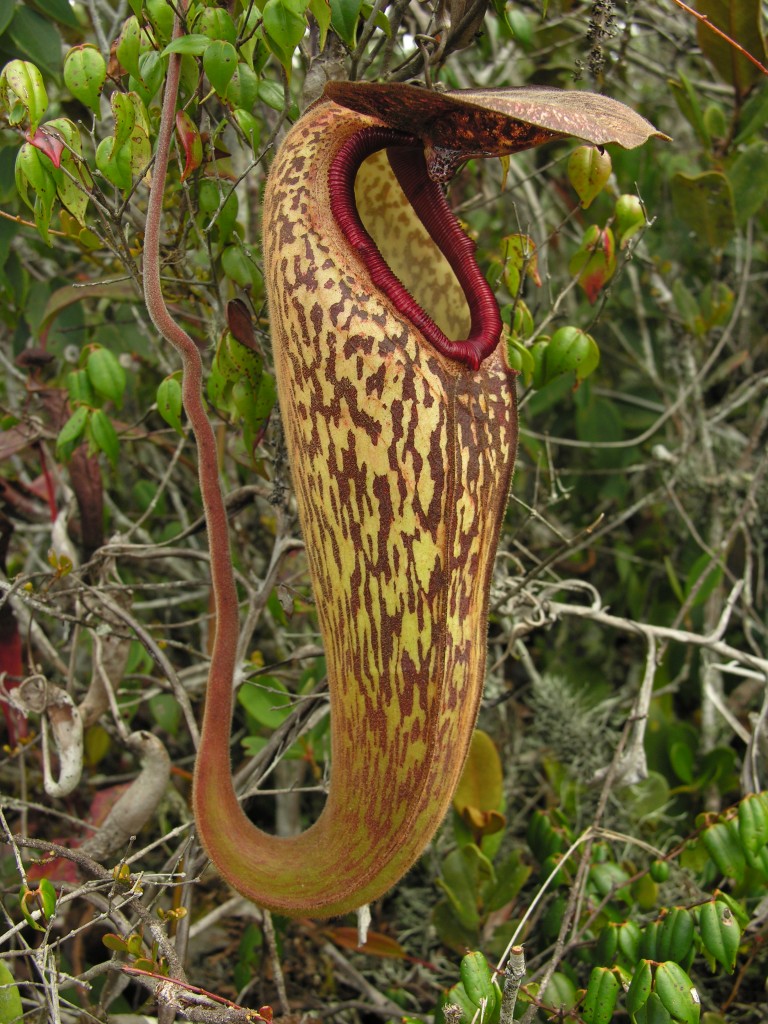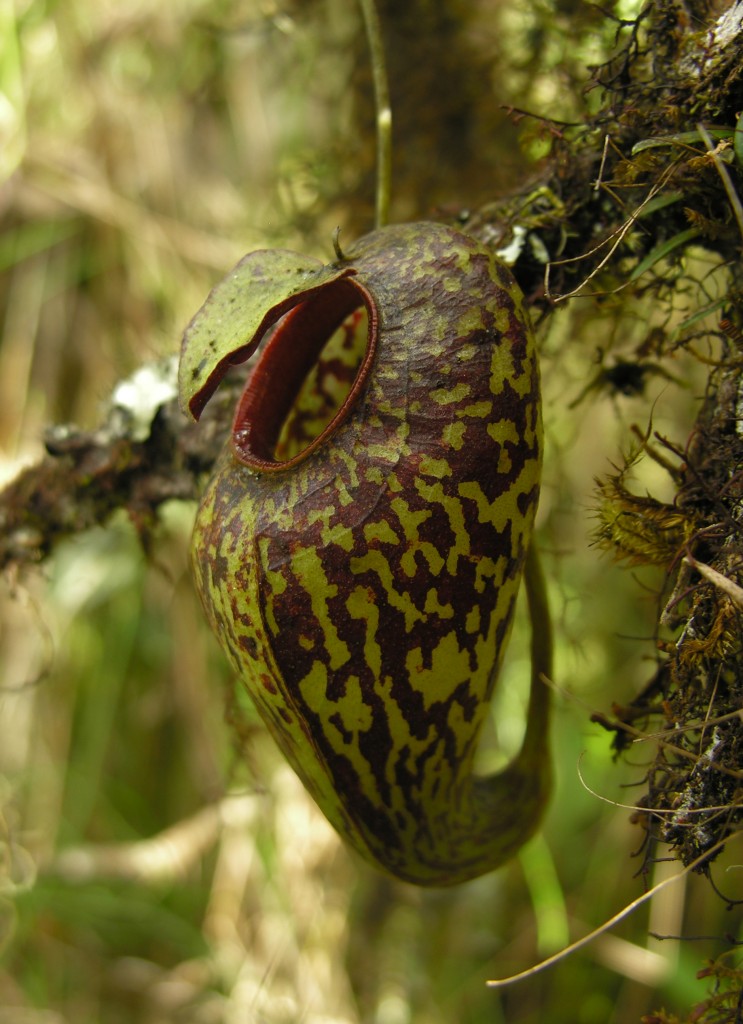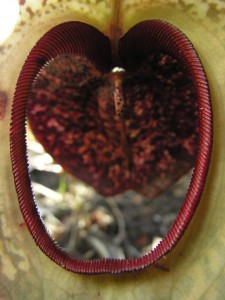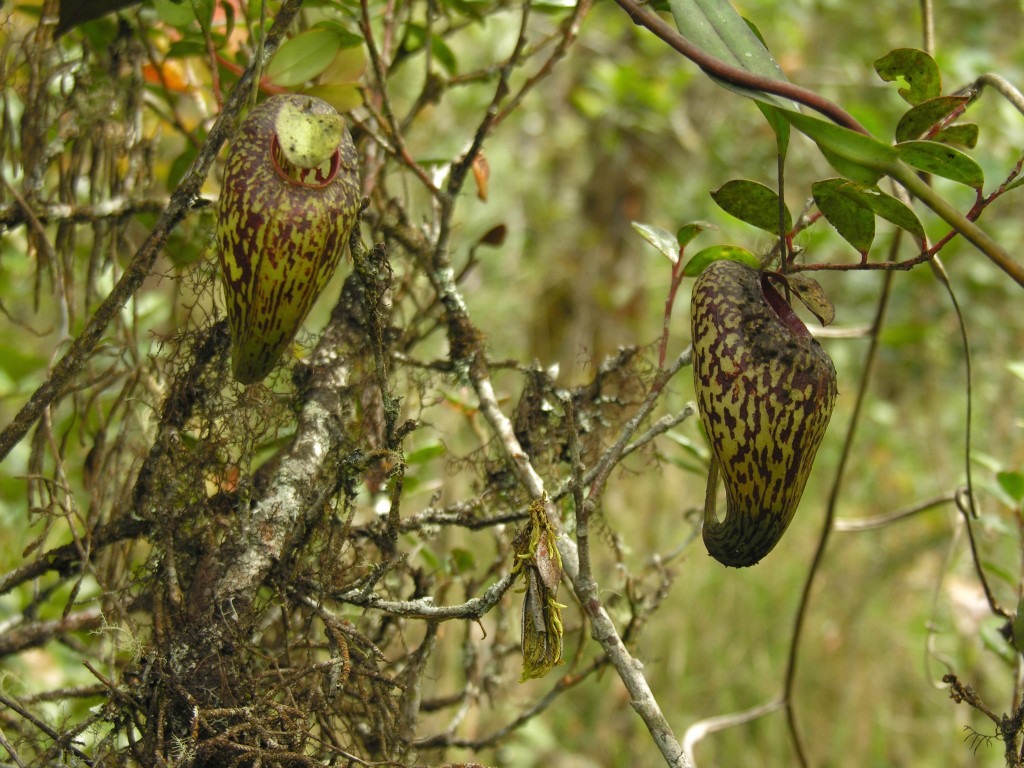Two very special species of pitcher plants (Nepenthes) grow in Indonesia. One (N. aristolochioides) is endemic to Sumatra and relatively well known. The other (N. klossii) is found only in the Indonesian province of Papua in New Guinea and is much less well documented. Both are unique for they produce highly specialized pitchers which trap arthropods by use of light.
N. aristolochioides is named after the flowers of Aristolochia (a genus of non–carnivorous vines), to which, the pitchers bare similarity. N. aristolochioides is known from only three locations within the Kerinci Seblat National Park, located in West Sumatra and in the province of Jambi. Unfortunately, this species is critically endangered in the wild, mainly due to poaching and over collection, and it is possibly extinct at one of the locations where it originally grew.
It produces pitchers up to 13 cm long and 5 cm wide. In both pitcher types, the bottom three quarters of the trap is infundibular (although narrowly so). The basal part of the lower pitchers is broader than that of the upper traps. The top section of both pitcher types is bulbous and inflated, with a flattened front face, on which part the small, circular, orifice–like pitcher opening is located. The pitcher opening is up to 4 cm in diameter, and is unusual among Nepenthes, in that it is positioned almost vertically. Wings up to 9 mm wide, fringed with filaments up to 10 mm long often run down the front of the lower pitchers but the wings reduced to narrow ridges in the upper pitchers, or are not discernable at all.
The peristome is up to 15 mm wide, and protruded inwards into the pitcher and roles back on itself, forming an inward–projecting rim similar to the entrance of a lobster pot. Usually, there is a gap in the peristome (up to 5 mm wide), immediately below the lid. The peristome is lined with ribs up to 0.8 mm high, spaced up to 0.6 mm apart. The peristome protrudes externally for up to 2 mm. The lid is elliptic or sub–orbicular, up to 4 cm long, 3 cm wide and lacks an appendage. The lid is positioned immediately above the pitcher opening and casts shade over the entrance of the trap. The dark colouration on the underside of the lid (see below) causes the lid to be opaque. The spur is unbranched, up to 10 mm long, and is positioned immediately behind the lid.
Both pitcher types have comparable colouration. The exterior of the trap is pale yellowish green (but lightens in hue from the base of the trap towards the top) and is lined with variable, long, dark red or purple blotches. The interior surface is pure light yellow or creamish in colour. The tissue of the pitchers is thin and semi–transluscent (particularily towards the top of the trap), and this causes sunlight to illuminate the interior of the pitcher, often very brightly. The opaque red blotches (on the exterior of the trap) are visible from the interior when the pitcher is in sunlight. The peristome is consistently pure dark red or purple. The upper surface of the lid is yellowish, lined with dark red flecks, and the underside of the lid is generally pure dark red or purple.
N. klossii is much less well known, despite being one of Indonesia’s most spectacular species of pitcher plants. It was named after Cecil Kloss who collected the first herbarium specimens of this plant during an expedition in south western New Guinea in 1913. Known only from Papua, N. klossii occurs across the districts of Paniai and Merauke, and is also recorded from the lower slopes of Mount Jaya (Carstensz Pyramid), the highest peak of New Guinea. The conservation status of this plant is not accurately known, because its habitat is so remote and inaccessible. But, the only easily accessible population of this species faces imminent destruction to make way for a new road, and construction is already underway. All other recorded populations of this plant occur in the remote and inaccessible interior of Papua, and mostly have not been observed for many decades.
It produces pitchers up to 26 cm long and 7 cm wide. The overall structure of the traps is almost identical to those of N. aristolochioides, except that the pitchers are proportionately longer but generally narrower, and have a much broader pitcher opening. Wings up to 9 mm wide, fringed with filaments up to 7 mm long often run down the front of the lower pitchers but the wings are greatly reduced in the upper traps (usually without filaments) or may be entirely reduced. The pitcher opening is an oval, orifice up to 4 cm in diameter. The peristome is up to 14 mm wide, and protruded inwards into the pitcher and roles back on itself, forming an inward–projecting rim similar to the entrance of a lobster pot. The peristome is lined ribs up to 1 mm high, spaced up to 1.5 mm apart. The outer edge of the peristome of the upper pitchers may be faintly crenellated. All parts of the pitchers and foliage of this species are lined with golden hairs up to 7 mm long, which gives the plant a velvety feel. And the leaves of N. klossii differ profoundly from those of N. aristolochioides in that they are much larger and petiolate, so the two species are unlikely to be confused.
The colouration of the pitchers of N. klossii is also comparable to that of N. aristolochioides. The exterior of the trap is pale yellowish green (but lightens in hue from the base of the trap towards the top) and is lined with variable, long, dark red or purple blotches. The interior surface is pure light yellow or creamish in colour. Similarly, the tissue of the pitchers is thin and semi–transluscent (particularly towards the top of the trap), and this causes sunlight to illuminate the interior of the pitcher, often very brightly. The opaque red blotches (on the exterior of the trap) are visible from the interior when the pitcher is in sunlight. The peristome is consistently pure dark red or purple. The upper surface of the lid is yellowish, lined with dark red flecks, and the underside of the lid is generally pure dark red or purple.
In both species, the trapping process is very complex. Nectar is secreted on the peristome and underside of the lid, and this attracts insects to the pitcher opening. In both species the lid is broad, positioned directly above the pitcher opening, and casts shade over the entrance of the trap. From the perspective of an insect on the peristome, light shining through the thin pitcher tissue causes the interior of the pitcher to represent the brightest route. The insect interprets this as the direction of bright sky and freedom and after consuming the nectar on the peristome, it flies or crawls inside the trap, towards the bright interior of the pitcher. Flying insects collide with the back of the pitcher and are deflected downwards by the curvature of the trap. Crawling insects may also enter the trap in attempting to reach the bright back, or may fall from the peristome, into the trap. Eitherway, eventually the victim plummets into the pitcher fluid inside the trap, and unable to climb to safety, it drowns and is digested.
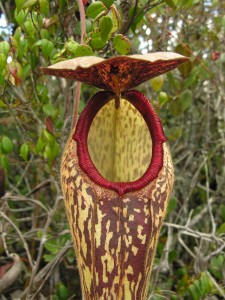 The colouration of the pitcher plays a particularily important role in the trapping process of these species. The light interior contrasts with the consistently dark peristome and underside of the lid, and it is this contrast as well as the illuminated interior of the pitcher, which deceives prey into entering the trap. Perhaps the mottled dark colouration on the exterior of the pitcher, which is faintly visible from the inside, provides prey with a focus to fly towards or simply confuses prey. The effectiveness and specialization of the trapping process of N. aristolochioides and N. klossii is reflected in that the majority of the prey caught by these species generally consists of small flies, which are attracted to bright light sources.
The colouration of the pitcher plays a particularily important role in the trapping process of these species. The light interior contrasts with the consistently dark peristome and underside of the lid, and it is this contrast as well as the illuminated interior of the pitcher, which deceives prey into entering the trap. Perhaps the mottled dark colouration on the exterior of the pitcher, which is faintly visible from the inside, provides prey with a focus to fly towards or simply confuses prey. The effectiveness and specialization of the trapping process of N. aristolochioides and N. klossii is reflected in that the majority of the prey caught by these species generally consists of small flies, which are attracted to bright light sources.
Although the structure of the pitchers and the trapping process of N. aristolochioides and N. klossii is virtually identical, these two species are not closely related, and evolved separately although along convergent evolutionary paths. Characteristics of this trapping process arise in representatives of three other (unrelated) genera of pitcher plant (Cephalotus, as well as Darlingtonia and Sarracenia).
The survival of N. aristolochioides and N. klossii in the wild will depend on whether the habitat of these remarkable plants is protected and preserved for the future. Even though N. aristolochioides occurs exclusively within the Kerinci Seblat National Park, this species is critically close to extinction due to rampant poaching. N. klossii is less severely threatened overall, but nevertheless will become increasingly vulnerable if the interior of New Guinea is extensively logged and deforested. The future of these two remarkable plant species lies in Indonesia’s hands. Let us hope that will face a secure future in the world of tomorrow.
Stewart McPherson
